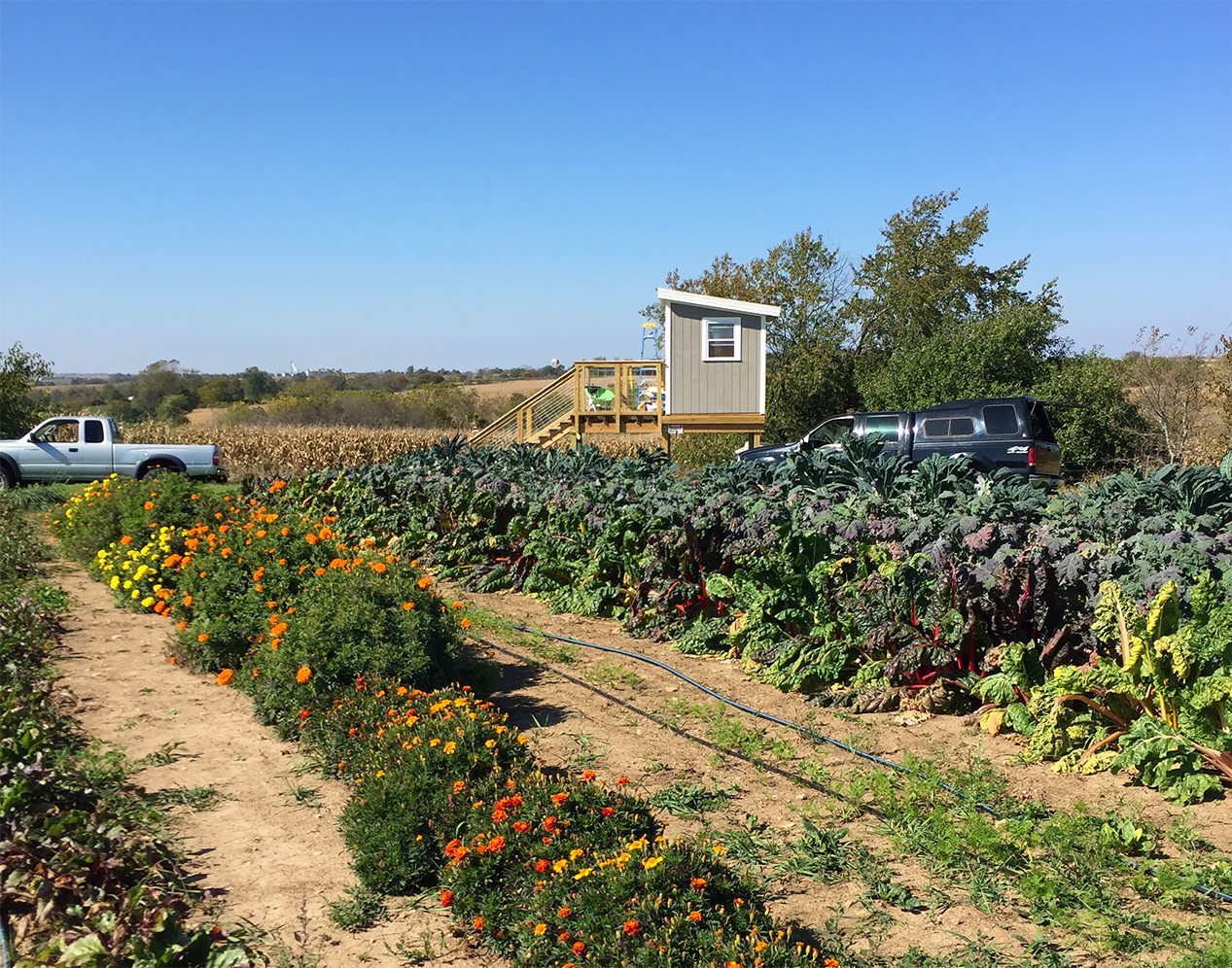Our Best Year Yet!
15,200 pounds! That is massive! Thanks to the efforts of over 70 volunteers throughout the growing season, we were able to grow and deliver over 7.5 tons of produce. Due to the sheer volume of produce coming out of the garden each week, we concentrated our donation efforts to Second Harvest in Madison. Melissa’s Volvo station wagon made two trips each week to Madison filled to overflowing with crates and crates of veg. Working with Second Harvest takes away the need to deliver to individual food pantries and allows each food pantry to get the produce they need, when they need it. Second Harvest also serves a much bigger area which means that our produce doesn’t go to waste. They make sure it is all moved quickly out to their various distribution options.
The seed order went in to Johnny’s in late January which meant that the boxes of seeds sat on the shelf in the cool storage room taunting us during the last weeks of winter and early spring. Finally, in early March we started our first seeds in the amazing soil blocks. Soil blocks are comprised of peat moss, compost, dirt, and perlite fixed with fertilizer. This combination is moistened and formed into blocks that have a dibble or indentation in the top where the seeds are placed. This is an amazing method that allows us to grow strong and healthy plants that transplant with minimal to no shock. Transplanting use the soil blocks is really easy and fast for our planting volunteers.
We found that the walk-in cooler that was built in 2014, provided the perfect location for starting our transplants. As soon as the soil blocks are ready, we place them into the germination chamber with the heater set to 65 degrees F, which provides the perfect location to get things started. Immediately after germination, we move the seed blocks to a small heated green house on heat mats. This is such a great system for getting things started properly in the spring.
Our fieldwork officially kicked off in mid-April when the Elliot and Zettle families arrived with the horses and mules to do the spring plowing. They broke open another plot and enlarged two others. This gives us a total of 6 plots with the option to have one plot at rest each season planted to nitrogen fixing green manures like field peas, alfalfa and clover. This year we did rest one of our plots that had been in use for over 7 years by planting it to beautiful field peas and clover. This plot will be ready to work again in 2016 after the addition of organic materials and nitrogen.
In early May, the Monroe High School students joined us at the garden for their annual service day event. While they were with us, they painted the “trailer” which houses the walk-in cooler/germination chamber. Other changes to the garden included the addition of an office for the garden manager and a large children’s playhouse raised off the ground by 7 feet and with a deck that overlooks the gorgeous valley to the west of the garden. This is the best place to view the magnificent sunsets at the garden. This also offers the only shaded spot to sit and proved to be a favorite for the volunteers who wanted to rest for a bit while eating lunch.
Bountiful Hope hosted our first intern in 2015. Anya joined us for the summer from the University of Wisconsin Green Bay. It was wonderful to have her participation throughout the mid-summer season. Another first for us was hosting two amazing WWOOFers. WWOOF is a global organization that connects people (WWOOFers) who work on organic farms in exchange for room and board. It proved to be a wonderful option for us. WWOOFers bring an amazing willingness to work, learn and teach. We are looking forward to hosting another intern and several WWOOFers for 2016.
We are still struggling to learn how to use the hoop house to its full potential. It is a land of extremes inside; with daytime temperatures rising 20-30 degrees above the outside but with the evening temperatures falling to nearly the same as the outside. This requires plants to tolerate huge swings in temperature. The big failure for the year was with the cantaloupes inside the hoop house. They grew with gorgeous foliage but never could set fruit due to the high temperatures. Such a disappointment, but we do intend to grow melons again just not inside the hoop house. The plan for 2016 is to use the hoop house in the very early spring for the first greens and then use a shade clothe to cover the hoop for the hottest part of the summer. The shade cloth combined with the solar fans should make the environment inside the hoop house more plant-friendly even on the hottest days.





